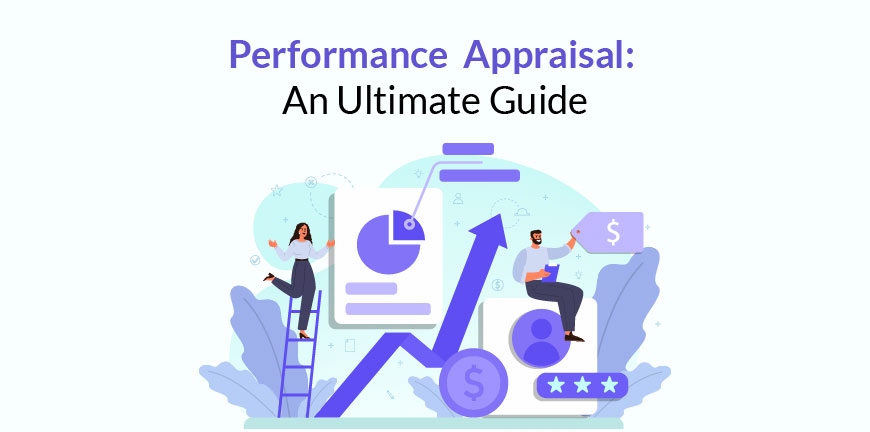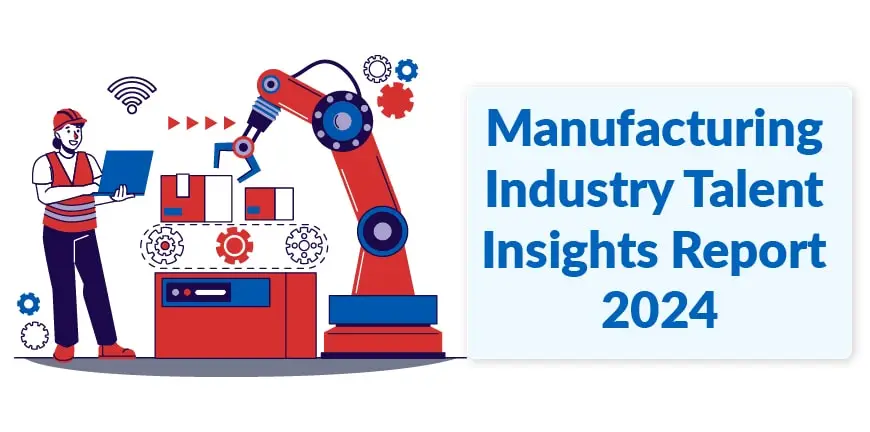
Diversity, Equity & Inclusion (DEI) In the Workplace – A Compendium
05/09/2023
Saving the Candidate Experience – A Complete Guide
06/09/2023- What Is Performance Appraisal? (Meaning & Definition)
- Why Is Performance Appraisal Important in Organisations?
- What Are the Key Objectives of Performance Appraisal?
- How Does the Performance Appraisal Process Work?
- What are the Different Types of Performance Appraisals?
- What Are the Modern Techniques and Methods Used in Performance Appraisals Today?
- What Is the Checklist Performance Appraisal and How Is It Used?
- How Is Employee Performance Measured and Evaluated?
- What Role Does Feedback Play in Performance Appraisal?
- How Can Performance Appraisals Improve Employee Development?
- What are the Advantages and Disadvantages of Performance Appraisal?
- What Are the Principles and Key Features of an Effective Appraisal System?
- What Are the Most Common Challenges in the Performance Appraisal Process?
- What Are Best Practices for Giving Constructive Performance Feedback?
- How Do Performance Appraisals Impact Compensation and Promotions?
- How Is Technology Changing the Performance Appraisal Process?
- What Future Trends Are Emerging in Performance Appraisal?
- Key Takeaways
- Frequently Asked Questions
“Good performance accountability is about having a positive conversation between manager and employee. A manager is a coach and communicator, not a command and controller.” – Dave Ulrich, Co-Founder of RBL Group.
As employees, we are always looking forward to performance appraisal reviews as they dictate how our career moves forward. Similarly, the management team of the company are also eagerly seeking employee performance reports to make informed decisions on increasing compensation and setting up future goals for making better progress by maximising employee potential.
Both perspectives establish the importance of performance appraisal in a business setup in their unique ways. The next question regarding this endeavour might be, “Is the performance appraisal process giving the best outcomes for the company and employees alike?
On the surface, the answer to this question seems somewhat straightforward. However, in reality, understanding the performance appraisal process in HRM and interpreting the outcomes can be tricky & misleading at times. Let’s bust the bubble and clear the air once and for all about performance appraisal through this comprehensive guide.
What Is Performance Appraisal? (Meaning & Definition)
Performance appraisal is a standard practice of reviewing and rewarding an employee’s overall performance for a specific duration. According to Select Software Reviews, nearly 71% of firms conduct performance appraisals in HRM once a year, and around 69% do it every six months.
- A well-crafted performance appraisal process can offer clear insights into
- An employee’s strong and weak areas,
- Strategies to make improvements.
- Provide rewards and recognition that match the performance.
- Gather feedback on how management has supported the employee’s progress.
- Future goals that drive career growth and long-term association.
The performance appraisal process in HRM can motivate employees to up their performance by a few notches & drive more success for the business. Therefore, the HR & management team must focus on providing the best appraisal experience, which includes a balanced blend of appreciation and constructive criticism for their efforts within the assessment duration.
Why Is Performance Appraisal Important in Organisations?
Performance appraisal plays a prominent role in maintaining a seamless workflow within the organisation by helping companies and employees improve their mutual trust.
By achieving the objectives of performance appraisal, companies can track employees’ progress and make informed future plans. In contrast, employees gain a clear understanding of their standing and how to accelerate their career growth.
Here are 4 pointers that shed light on the importance of performance appraisal:
1. Constructive Feedback
The performance appraisal process in HRM provides constructive feedback to employees to help them identify their areas of improvement through a detailed assessment and create a remedial action plan accordingly to fasten career growth and enhance productivity.
2. Role Clarity
Performance appraisal reports will help employees get clarity on their roles and responsibilities in helping businesses grow exponentially. Here is one of the performance appraisal examples that sheds light on the importance of roles and responsibilities.
An executive role is to carry out tasks defined by the manager within deadlines. Suppose a task takes longer than necessary; then the executive must consult the manager to find the best solution.
If the executive hesitates and still tries to complete the task without worrying about the delay, then it’s clear that the executive has not understood the role clearly. During a performance appraisal meeting, such instances will be discussed, and role clarity will be provided to help employees understand their role and work accordingly.
3. Resource Management
Through techniques of performance appraisal, management can allocate resources more effectively based on KPIs & proactive decision-making. Example: A company can initiate a promotion offer for an internal worker who has given the best performance to fill a management-level position instead of hiring a new candidate.
4. Rewards and Recognition
Deploying the best methods of performance appraisal in HRM can help companies filter out the best performers from the average ones. The management team can offer rewards and promotions to such employees and improve retention rates.
What Are the Key Objectives of Performance Appraisal?
The 5 key objectives of performance appraisal include:
1. Evaluate Individual Performance
The performance appraisal team measures employee achievements against predefined standards to determine effectiveness in their role. This ensures alignment with job expectations and organisational performance benchmarks.
2. Identify Training and Development Needs
The evaluator highlights skill gaps and competency shortfalls. This enables targeted learning programs that will enhance capabilities and prepare employees for future responsibilities or career progression.
3. Support Compensation and Promotion Decisions
The performance appraisal process in HRM must provide objective data to inform salary adjustments, bonuses, promotions, or role changes based on measurable contributions and consistent performance outcomes.
4. Enhance Communication Between Manager and Employee
Performance appraisal in HRM facilitates structured discussions on performance, expectations, and goals, fostering clarity, mutual understanding, and stronger manager-employee relationships.
5. Align Employee Goals with Organisational Objectives
The techniques of performance appraisal must be directed towards ensuring individual objectives directly contribute to company strategies. This promotes a shared focus on achieving short-term targets and long-term growth initiatives.
How Does the Performance Appraisal Process Work?
Here are the 7 steps of performance appraisal that most reputed companies follow to evaluate employee performance:
1. Establish Performance Standards
Define clear, measurable, & role-specific expectations that are in line with organisational objectives. These guidelines equip employees with a benchmark for evaluating their contributions and responsibilities.
2. Communicate Expectations to Employees
The assessment team must share performance standards and objectives with employees, ensuring they understand the criteria, timelines, and how their work will be evaluated throughout the appraisal period.
3. Monitor and Document Performance
The evaluator must track progress continuously using reports, observations, and performance metrics. This strategy helps in maintaining accurate records to support fair, evidence-based evaluations during the performance appraisal review.
4. Collect Performance Data
The performance assessment manager or team must gather feedback from multiple sources, like managers, peers, clients, etc. Additionally, they must use self-assessments and compile quantitative & qualitative information to create a balanced view of employee performance.
5. Evaluate and Rate Performance
The manager carrying out the performance appraisal process must assess employee achievements against established standards. Additionally, assigning ratings or scores based on measurable results, competencies, & observed workplace behaviours.
6. Conduct the Appraisal Meeting
The evaluators must engage in a structured discussion with the employee. They must share evaluation results, recognise strengths, address improvement areas, and align employee objectives with future business goals.
7. Develop Action and Improvement Plans
The performance assessment manager must create targeted development strategies, training schedules, or role adjustments. These methods help in addressing gaps, enhancing skills, and supporting career progression based on appraisal insights.
What are the Different Types of Performance Appraisals?
Here are 5 modern methods of performance appraisal practised by top SMEs and MNCs:
1. 360-Degree Feedback Appraisal
The performance assessment team gathers feedback from multiple sources within the organisation. The sources can be managers, colleagues, subordinates, &, in some cases, end-customers.
360-Degree Feedback Appraisal offers a comprehensive view of an employee’s performance, skills, and behaviour, promoting balanced development & improved workplace relationships.
2. Management by Objectives (MBO)
This type of performance appraisal in HRM involves setting measurable goals generated via brainstorming sessions between the employer & employees.
After the assessment duration hits green, the leadership group will sit down & evaluate performance by measuring the level of accomplishment of these objectives. MBO fosters credibility & accountability, provides motivation, & creates a result-driven work culture.
3. Behaviourally Anchored Rating Scale (BARS)
This is one of the most popular modern techniques of performance appraisal. This method uses specific behavioural examples linked to numerical ratings to assess performance.
BARS ensures clarity, reducing bias, and focusing evaluations on observable actions rather than vague traits or subjective opinions.
4. Self-Assessment Appraisal
It is one of the most preferred performance appraisal methods, especially by startups. Here, employees will put on binoculars & assess their own performance, merits & demerits, and grey areas that can be improved instead of superiors pinpointing them.
SAA approach encourages self-awareness, accountability, & active participation in the performance appraisal process in HRM while aligning personal growth with organisational goals.
5. Checklist Appraisal
It is a widely accepted checklist method of performance appraisal. Here, the managers churn out and use a predefined list of performance statements or criteria to mark applicable behaviours. This approach provides a quick, structured, and consistent way to assess and compare employee performance across roles.
What Are the Modern Techniques and Methods Used in Performance Appraisals Today?
Here are modern techniques and methods of performance appraisal in HRM:
1. Continuous Performance Management (CPM)
It is one of the most practised modern methods of performance appraisal in the current business landscape. Here, we lay emphasis on ongoing check-ins, feedback, & goal tracking throughout the year instead of standard annual reviews. This technique fosters agility, timely recognition, & real-time performance improvement opportunities.
2. Psychological Appraisals
Psychological Appraisals take a reverse approach where they evaluate future potential rather than just past performance. In these types of performance appraisal, the evaluation team uses tests, interviews, and observations to measure traits like leadership ability, emotional intelligence, & problem-solving skills for career development planning.
3. Human Resource (Cost) Accounting Method
In this performance appraisal process, the assessment team measures employee performance in monetary terms. They are analysing their contribution to organisational profitability versus the cost of retaining them, offering a financial perspective on workforce value.
4. Assessment Centre Method
This type of modern performance appraisal process in HRM involves simulated work scenarios, role-playing, & group exercises. This mimic realm helps to qualitatively measure competencies such as teamwork, decision-making, and leadership, providing a practical and predictive measure of performance and potential.
5. 360-Degree Real-Time Feedback Tools
In this technique, the assessment team uses digital platforms to collect continuous peer, subordinate, and manager feedback instantly. This creates a live performance profile and enables prompt corrective actions or recognition.
What Is the Checklist Performance Appraisal and How Is It Used?
Here is the checklist method of performance appraisal and how it can be used effectively to correctly assess employee performance.
| Checklist Item | Description | How It Is Used |
| Attendance & Punctuality | Evaluates if the employee reports to work within the cutoff time & maintains regular attendance with fewer instances of absence in the agreed-upon assessment period. | Assists in gauging reliability & observing patterns that may affect overall team productivity. |
| Work Quality | Qualitatively measures accuracy, attention to detail, & adherence to internal and compliance standards. | Used as a guiding light in finding out if deliverables are in cohesion with organisational & role-specific quality expectations. |
| Teamwork & Collaboration | Assesses eagerness to work cordially with peers, share acumen, & support team objectives. | Identifies cooperative behaviour & measures contribution towards overall team success. |
| Adaptability to Change | Reviews how quickly & effectively the employee copes with new processes, tools, or organisational changes. | Used to assess flexibility and ability to perform optimally in dynamic work environments. |
| Initiative & Proactivity | Evaluates how often the employee acts to de-escalate complex situations without being prompted. | Measures self-motivation & contribution beyond assigned duties. |
| Communication Skills | Examines clarity, effectiveness, & professionalism in verbal & written communication. | Assesses interpersonal effectiveness & ensures accurate information flow. |
| Customer Service Orientation | Measures employees’ ability to respond to customer needs with professionalism & empathy. | Ensures sync with service quality goals & customer satisfaction standards. |
| Compliance with Policies | Checks adherence to company internal rules, safety guidelines, & ethical standards. | Maintains organisational integrity and reduces the risk of policy or legal violations. |
| Problem-Solving Skills | Evaluates the ability to identify issues, analyse options, and implement solutions. | Determines decision-making capability and resourcefulness in addressing challenges. |
| Learning & Development | Tracks participation in training & willingness to acquire new skills. | Identifies growth mindset and readiness for future responsibilities or promotions. |
How Is Employee Performance Measured and Evaluated?
Here are 5 proven methods to measure & evaluate employee performance that can be used as connecting dots while carrying out performance appraisal in HRM:
1. Key Performance Indicators (KPIs)
Here, the assessment team tracks target markers like sales numbers, project deadlines, or productivity cycle time. These values provide objective data to evaluate employee contribution toward organisational goals & individual performance standards.
2. Balanced Scorecard
The appraisal crew will assess performance across multiple facets such as financial results, customer satisfaction, internal processes, & learning/growth. The outcomes offer a holistic view of how employees fare when it comes to contributing to both short-term & long-term organisational success.
3. Peer Review
Here, the colleagues make a detailed assessment of each other’s work quality, collaboration, & professionalism and generate a consolidated report. This gives well-rounded insights into interpersonal skills, teamwork, & contribution to group objectives from those who work closely with the employee.
4. Goal Achievement Evaluation
This holistic technique measures performance based on the extent to which agreed-upon objectives or project milestones are met. This methodology lays emphasis on results, credibility, & sync between employee deliverables & organisational priorities.
5. Competency-Based Evaluation
In this method, we will rate employees on specific skills, behaviours, and knowledge required for their roles. This employee performance measurement technique ensures that performance assessment reflects both technical expertise & soft skills critical for job success.
What Role Does Feedback Play in Performance Appraisal?
Performance appraisal feedback plays the role of a catalyst in employee performance management efforts. Here are 4 ways through which feedback makes a serious impact on performance appraisal.
1. Employee Development
Feedback serves as a mirror to employees during appraisal and shapes their efforts towards improving their weak areas and acquiring new skills and capabilities.
2. Recognition and Motivation
Positive feedback paired with recognition acts as a propeller to help employees increase their efforts towards creating a positive work culture that thrives in difficult circumstances and maintains growth.
3. Goal Setting
Performance appraisal feedback gives detailed information on how an employee’s performance stacks against organisational objectives and project goals. The employees can leverage these insights to set new goals that are perfectly in line with business objectives rather than stick to a random target.
4. Better Communication and Clarification
Feedback sessions during appraisal create an open communication channel between employees & managers. Through a performance appraisal platform, employees can get clarity on expectations, share concerns, & create a rapport with the management to foster a better work culture.
How Can Performance Appraisals Improve Employee Development?
Here are 5 ways performance appraisal in HRM accelerates employee development:
1. Clarifies Skill Gaps
The modern techniques of performance appraisal pinpoint grey areas of technical and soft skills that must be given immediate attention by employees. This approach gives them a clear roadmap for targeted learning and professional growth.
2. Offers Constructive Feedback
Constructive feedback amassed during the performance appraisal process in HRM acts as a revelation to help employees realise their strengths & shortcomings. This enables them to refine their approach & enhance job performance.
3. Sets Development Goals
The modern methods of performance appraisal help in creating structured and measurable personal development objectives. These goals guide employees toward acquiring new competencies & expanding their capabilities over time.
4. Encourages Learning Opportunities
The methods of performance appraisal in HRM bring valuable insights on training programs, certifications, or workshops to be formulated that perfectly synchronise with employees’ career goals. This approach promotes continuous learning and skill enhancement.
5. Supports Career Path Planning
The techniques of performance appraisal channelise individual strengths & growth areas with potential future roles. This approach helps employees get ready for promotions or lateral moves within the organisation.
What are the Advantages and Disadvantages of Performance Appraisal?
Here are 5 advantages and disadvantages of performance appraisal:
Advantages of Performance Appraisal
1. Real-Time Feedback Enhances Agility
The modern techniques of performance appraisal offer instant feedback. This feedback loop system propels the workforce in a new direction that brings more agility & adaptability.
2. Better Alignment with Organisational Goals
Tech-enabled performance appraisal methods integrate organisational objectives with a goal-tracking system. This ensures employee objectives remain true with company priorities & allow quick recalibration in case market demands take a different path.
3. Data-Driven Insights Negate Bias
Modern methods of performance appraisal utilise different forms of analytics & AI-powered mechanisms to assess objective metrics. This minimises the instances of confirmation bias & ensures fair, evidence-driven performance evaluations are conducted across the board.
4. Facilitates Personalised Development Plans
Advanced techniques of performance appraisal map employee skills and performance data to tailored learning paths. This ensures professional development is relevant, targeted, & directly linked to individual career aspirations.
5. Enhances Remote Workforce Management
Modern techniques of performance appraisal promote blemish-less tracking of employee output, collaboration, & engagement in hybrid or remote work environments. This ensures consistent performance oversight regardless of location.
Disadvantages of Performance Appraisal
1. Potential for Bias
Opinions from managers that are backed by confirmation bias can influence ratings, leading to unfair evaluations & employee dissatisfaction.
2. Time-Consuming Process
Modern performance appraisal methods require significant preparation, documentation, and meetings. This can divert the time of the assessment panel from core work responsibilities.
3. Stress for Employees
The performance appraisal in HRM can create anxiety, impacting morale & performance during and after appraisal periods.
4. Overemphasis on Recent Performance
Managers may focus on only recent events during the performance appraisal process, ignoring earlier achievements, leading to incomplete performance assessments.
5. Resistance to Feedback
Sometimes employees may react defensively to constructive criticism, limiting opportunities for learning & professional improvement.
What Are the Principles and Key Features of an Effective Appraisal System?
The principles and key features of a performance appraisal system include:
1. Clear Performance Standards
A well-defined, measurable, & role-specific performance appraisal criterion makes sure assessments are consistent, compatible, bias-free, objective, & directly in line with organisational expectations. This diminishes ambiguity during the performance appraisal process in HRM.
2. Regular and Structured Reviews
Performance appraisal process follows a planned schedule, like quarterly, bi-annual, or annual, with a standardised process. This ensures fairness, comparability, & alignment across departments and teams.
3. Multi-Source Evaluation
These modern techniques of performance appraisal incorporate feedback from multiple stakeholders, like managers, peers, subordinates, etc. This provides a holistic and balanced view of an employee’s performance, skills, and workplace behaviours.
4. Documentation and Record-Keeping
The performance appraisal process in HRM maintains detailed records of appraisal discussions, ratings, & agreed action points. This enables accountability, transparency, & reference for future performance tracking.
5. Alignment with Organisational Goals
Performance appraisal ensures performance criteria & evaluation parameters are tied to company objectives. This fosters a direct link between individual contributions & organisational direction.
What Are the Most Common Challenges in the Performance Appraisal Process?
The common challenges of performance appraisal include:
1. Recency error
This bias occurs when the recent performance of an employee is given more weight than overall performance within the appraisal duration.
An employee might have done exemplary work for nearly 80% of the time, but in recent times, he might have made some mistakes, creating a negative impression, which may result in poor appraisal results, and vice versa is also a possibility.
Recency error signifies short-sightedness and must be nullified and not considered as one of the factors affecting performance appraisal.
2. Biases
Personal and confirmation biases can negatively impact the performance appraisal process. The evaluator may rate employees based on personal feelings, social or cultural background, and information received from peers, which may or may not be true. Such biases can completely derail the objectives of performance appraisal and provide inaccurate results.
3. Subpar Feedback System
The performance appraisal process is complex and prone to errors. The evaluator may generalise the process and assess every employee in the same way, which may not offer accurate results.
Sometimes, the evaluator may give high ratings for a few, and just to balance it, they may give low ratings for some employees to show that the process is transparent.
These errors result in the creation of a subpar feedback system, resulting in ineffective performance appraisal.
What Are Best Practices for Giving Constructive Performance Feedback?
Here are 5 best practices to improve the performance appraisal process that will offer constructive performance feedback:
1. Provide Specific and Evidence-Based Feedback
During the performance appraisal process in HRM, use evidence-based examples & measurable results to ensure feedback is factually accurate & not based on confirmation bias. This leaves no ambiguity about the performance areas being addressed.
2. Maintain a Balanced Evaluation Tone
As a seasoned evaluator, you must acknowledge notable achievements before moving to grey areas. This approach ensures the performance appraisal conversation remains constructive, motivating, & focused on overall growth rather than only criticism.
3. Apply the SBI (Situation-Behaviour-Impact) Framework
Use specific performance appraisal examples to describe situations, observed behaviours, & their impact on team or organisational outcomes. This approach gives employees a clear context for their ratings and offers them an opportunity to make suitable changes for better performance in the next appraisal cycle.
4. Encourage Active Employee Participation
Make the performance appraisal process a two-way conversation where employees can clarify points, share self-assessments, and discuss challenges. This fosters ownership of their performance results and helps them introspect positively.
5. Emphasise Development-Focused Outcomes
The evaluation team must conclude performance appraisal discussions with actionable steps, training plans, or stretch assignments to guide improvement. This positions the review as a springboard for career development.
How Do Performance Appraisals Impact Compensation and Promotions?
Here are 5 ways the principles of performance appraisal impact compensation and promotions:
1. Merit-Based Salary Increments
High-performance appraisal ratings typically lead to salary increments linked to individual achievements. This ensures compensation reflects contribution level, work quality, & alignment with organisational performance expectations.
2. Promotion Eligibility Assessment
Performance appraisal in HRM helps identify employees ready for higher responsibilities by evaluating skills, leadership potential, and consistent performance, forming the basis for internal advancement decisions.
3. Performance-Linked Bonus Allocation
Annual or quarterly performance appraisal reviews determine bonus amounts based on goal achievement, productivity, and measurable contributions, tying variable pay directly to appraisal outcomes.
4. Role Reassignment or Upgradation
Strong appraisal results may justify role enhancements, project leadership opportunities, or expanded responsibilities. This positions employees for career progression within the organisation.
5. Equity and Incentive Distribution
Performance appraisal reviews guide decisions on awarding stock options, profit-sharing, or special incentives. This aligns long-term rewards with sustained high performance and organisational growth goals.
How Is Technology Changing the Performance Appraisal Process?
Here are 5 ways technology is impacting the performance appraisal process:
1. Enabling Continuous Feedback
Digital platforms that support the performance appraisal process in HR allow real-time feedback and progress tracking. These cutting-edge integrations are slowly replacing annual reviews with ongoing performance conversations, resulting in enhanced agility, responsiveness, & employee engagement.
2. Data-Driven Decision Making
HR analytics and AI tools have replaced traditional performance measurement tools like Excel to analyse performance metrics more objectively. This reduces bias and ensures appraisal outcomes are supported by measurable evidence and predictive insights.
3. Automating Administrative Tasks
The implementation of performance management software automates scheduling, reminders, documentation, and report generation. This mechanism helps managers to focus more on meaningful appraisal discussions rather than manual paperwork.
4. Enhancing Remote Appraisals
Cloud-based performance appraisal systems enable seamless performance reviews for hybrid and remote teams. These systems support video feedback sessions, shared goal tracking, and location-independent performance management.
5. Personalising Development Plans
AI-powered platforms recommend tailored learning paths & skill-building resources based on appraisal data. This ensures employee growth plans are relevant, targeted, and role specific.
What Future Trends Are Emerging in Performance Appraisal?
1. AI-Driven Evaluations
Artificial intelligence-powered performance appraisal process analyses performance data for unbiased, predictive, & data-backed appraisal decisions.
2. Continuous Feedback Culture
Frequent and informal feedback is replacing rigid annual review cycles for agile performance management.
3. Employee Self-Analytics
The cutting-edge employee self-analytics tools allow employees to track their own performance metrics and improvement progress.
4. Real-Time Goal Tracking
Digital dashboards monitor employee progress toward objectives instantly. This is improving accountability and transparency.
5. Integration with Learning Platforms
Performance Appraisal systems connect directly to training tools for immediate skill enhancement opportunities.
6. Behavioural Analytics
Advanced analytics assess teamwork, communication, & leadership behaviours alongside traditional productivity measures.
7. Mobile-First Performance Management
Mobile apps enable on-the-go feedback, goal updates, & appraisal tracking anytime & anywhere.
8. Gamification of Appraisals
Game elements like badges and leaderboards increase employee engagement and motivation in reviews.
9. Wellbeing Metrics Integration
Mental health and work-life balance indicators have become an integral part of performance assessments.
10. Diversity & Inclusion Metrics
Performance appraisal in HRM is embedded with measures that track contribution to an inclusive and equitable workplace culture.
Key Takeaways
- Performance appraisal aligns employee growth with organisational goals through structured feedback, evaluation, and improvement planning.
- Modern performance appraisal methods emphasise continuous feedback, role clarity, and employee engagement for sustained productivity improvement.
- Effective appraisal systems balance recognition with constructive criticism, fostering trust, motivation, and long-term workforce retention.
- Performance appraisals link rewards and promotions to measurable performance, aligning employee growth with organisational objectives.
- Technology enables continuous, data-driven, and bias-free performance appraisals, enhancing agility and employee engagement.
Frequently Asked Questions
1. What is a performance appraisal?
According to the performance appraisal meaning, it is a systematic process where employee performance is evaluated against predefined standards, providing feedback for improvement, development, and organisational alignment.
2. Why is performance appraisal important in HR?
Performance appraisal in HRM helps measure productivity, identify development needs, support promotions, and align employee contributions with organisational goals effectively.
3. What are the different types of performance appraisals?
The common types of performance appraisal include 360-degree feedback, MBO, BARS, self-assessment, the checklist method, continuous performance management systems, etc.
4. How often should performance appraisals be conducted?
Traditionally, performance appraisal reviews are done once a year. However, modern practices recommend quarterly or continuous reviews for more timely feedback and performance tracking.
5. What are the steps involved in a performance appraisal process?
The 7 steps of performance appraisal include setting objectives, monitoring performance, collecting data, evaluating results, conducting review meetings, providing feedback, and creating development plans.
6. How do managers provide effective feedback during appraisals?
The managers conducting performance appraisal reviews use specific examples, maintain balance, focus on behaviours, encourage dialogue, and suggest actionable improvements for future performance.
7. What is the difference between performance appraisal and performance management?
Performance appraisal measures past performance, whereas performance management is an ongoing process focusing on planning, monitoring, and developing future performance.
8. How can performance appraisals motivate employees?
Performance appraisal facilitates recognising achievements, setting clear goals, offering growth opportunities, and linking performance to rewards or career progression.
9. What legal considerations are there in performance appraisals?
The legal considerations in the performance appraisal process in HRM include ensuring fairness, avoiding discrimination, maintaining documentation, and complying with labour laws to prevent potential legal disputes.
10. How can bias be minimised in performance appraisals?
Performance appraisal biases can be minimised by using objective criteria, multiple reviewers, structured methods, and training.
11. How does technology improve performance appraisal systems?
Technology-based performance appraisal systems enable real-time feedback, data analytics, goal tracking, automation, and better accessibility for remote or hybrid workforces.
12. What role do employees play in their performance appraisals?
Employees must self-assess, set goals, provide input, and actively participate in performance appraisal discussions for improvement and career growth.
13. How can performance appraisal results be used for employee development?
Performance appraisal in HRM helps in identifying skill gaps, recommending training, assigning projects, and creating personalised development plans aligned with career paths.
14. What are SMART goals in the context of performance appraisal?
Specific, Measurable, Achievable, Relevant, Time-bound objectives in the performance appraisal process guide employee performance & progress tracking effectively.
15. How are 360-degree feedback and self-assessment used in appraisals?
360-degree feedback and self-assessment gather multi-source perspectives and employee reflections, providing a balanced view of strengths, weaknesses, and growth opportunities.



